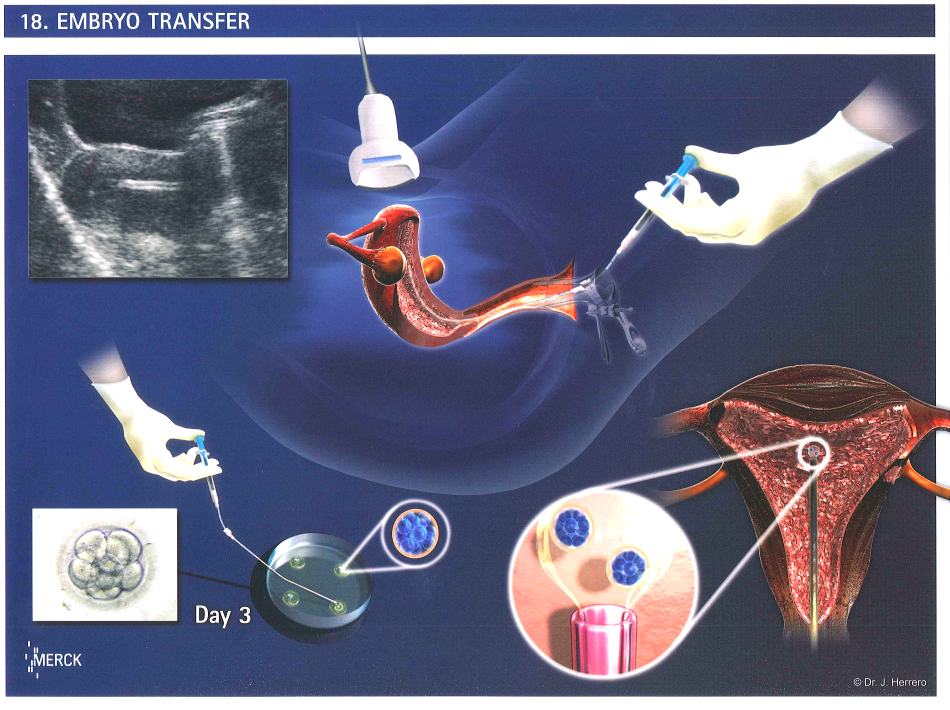In-Vitro Fertilisation- Embryo Transfer (IVF-ET)
Frozen-Thawed Embryo Transfer (FET)
FET is performed if a couple has previously undergone IVF and have elected to have their embryos frozen. FET is the procedure where the previously frozen embryos are thawed and replaced into the uterus.
Previously the traditional 'slow freezing' technology has been used. Nowadays, the new vitrification method of IVF embryo freezing is employed.
The 'post thaw survival' and pregnancy rates are much higher with vitrification.
Different Protocols:

Natural FET cycle
- Attend clinic about 18 days before the next expected menstruation. A pelvic ultrasound will be performed to assess follicle size
- Daily urine LH testing if follicle is ≥14mm.
- Once ovulation is detected, a blood test will be performed for confirmation.
- Day 2 frozen embryo cycles are done with transfer on day 3-4 after the LH surge.
- Blastocyst FET cycles are done with transfer on day 7-8 after the LH surge.。
- Pregnancy test will be done 11-14 days after embryo transfer.
Hormone replacement cycle
- Oral Estradiol 2mg twice a day starting on the third day of the cycle. This dose may need to be increased according to endometrial thickness.
- When the endometrium is 8mm, progesterone is started. Embryo transfer is planned for 2-5 days later. Oestrogen and Progesterone are continued into the luteal phase. Pregnancy test is done 12-14 days after transfer. If pregnancy occurs, oestrogen and progesterone are continued until 8 weeks of pregnancy.
Clomid Induced Cycle
- Clomid is given from day 3-7
- Tracking of ovulation and embryo transfer is the same as in natural FET cycle






